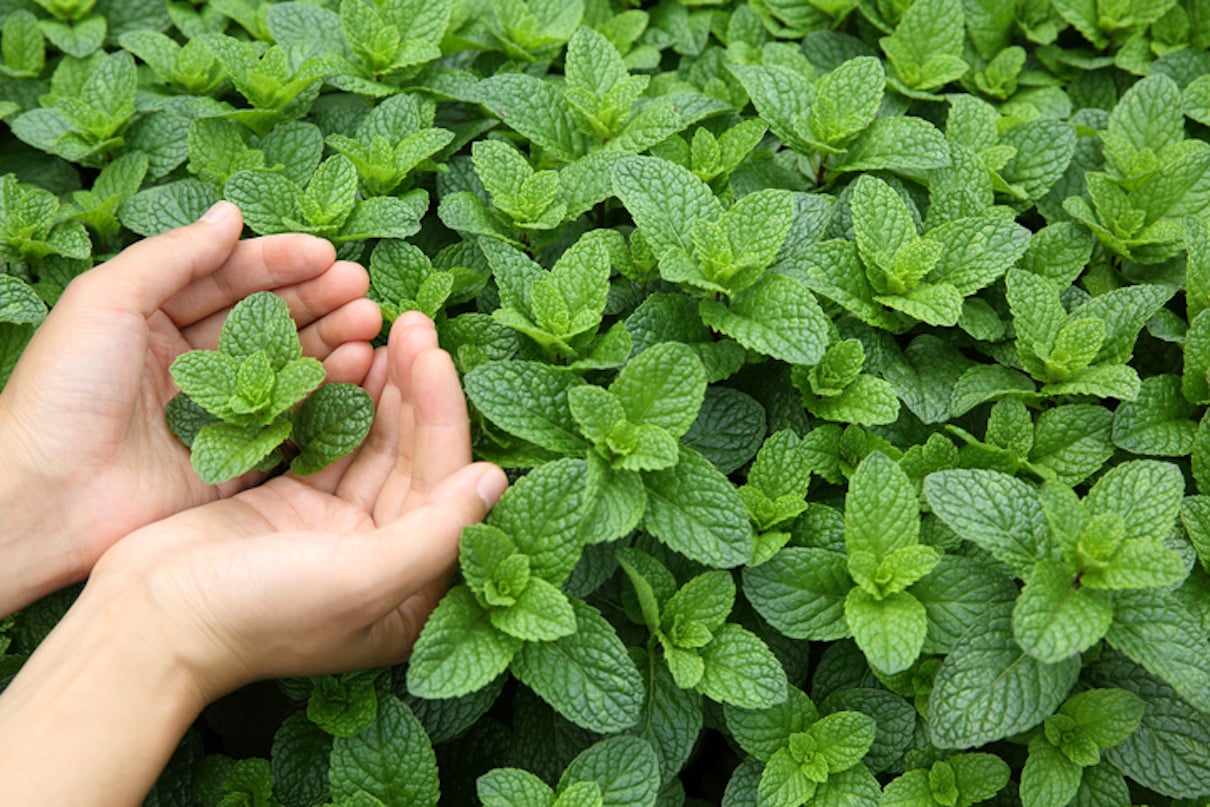Peppermint isn’t just used to garnish iced tea or keep your breath fresh. In fact, people have been using this plant as a traditional remedy for centuries. From digestion to headaches, peppermint offers incredible health benefits. Whether you add it to your tea, enjoy its refreshing aroma, or take it as a supplement, incorporating it into your daily routine is a simple and beneficial way to support your overall health.
In this article, we’ll explore the nutritional power of peppermint and simple ways to incorporate it into your daily life.
What is Peppermint?
Peppermint (Mentha × piperita) is a hybrid plant, a natural cross between watermint and spearmint. Often referred to as an aromatic plant due to its distinctive minty and sweet aroma, it is known for imparting a cooling and refreshing scent.
For centuries, these leaves have been used as medicinal plants in Europe and the Middle East to treat a variety of ailments, and today they are cultivated and enjoyed around the world in a variety of forms, including:
Enhance flavor: Peppermint flavored foods, beverages, and even dental hygiene products are easy to find. Its refreshing flavor makes it especially popular for seasonal items like holiday drinks and baked goods. Aromatically: Its clean scent is often used in essential oils, candles, car air fresheners, cosmetics, and other products that tout a minty or fresh scent.
Peppermint is more than just a flavor and aroma: Peppermint supplements and teas are used to provide its health benefits quickly and naturally.
Peppermint Health Benefits
Peppermint has a wide range of benefits that make it a powerful addition to most health and wellness routines.
The main health benefits of peppermint are:
Digestive Support
Peppermint has been used traditionally to aid in healthy digestion and relieve gastrointestinal discomfort. Research suggests that taking peppermint in oil form may help relieve unpleasant digestive symptoms by relaxing muscles in the digestive tract. It may also help address intestinal and nervous system sensitivity. These combined actions may help relieve common digestive discomforts such as indigestion, gas, and bloating.
That’s why the leaf is one of three herbs in HUM’s Flatter Me supplement that have been clinically studied for their effectiveness in reducing bloating.
Relieves headaches
Peppermint is also a common treatment for tension headaches. Older studies and traditional uses suggest that when applied topically, usually in oil form, it can effectively reduce headache intensity within 15 minutes. This, again, may be related to peppermint’s ability to relax muscles.
Although recent studies have found mixed results, topical peppermint remains a widely accepted treatment for headaches.
Dental Hygiene Support
As you may know, peppermint is often used in dental products such as toothpaste, mouthwash, and breath mints. Due to its antibacterial properties, peppermint does more than just freshen your breath: it improves your oral microbiome, or the bacterial composition of your mouth, helping to reduce the risk of poor gum health.
Studies have shown that peppermint oil can be beneficial by increasing saliva production, which can worsen bad breath. Additionally, menthol, the main active ingredient in peppermint, helps improve bad breath by neutralizing the odor.
Using peppermint-based dental products can help keep your mouth clean and healthy.
Of course, you can still reap the benefits of incorporating peppermint into your daily life in other ways.
Peppermint Tea Recipe
One of the easiest ways to increase your peppermint intake is to drink it as a tea, so follow this easy iced peppermint tea recipe to reap all the benefits peppermint has to offer.

What you’ll need:
4-6 fresh peppermint leaves (or 2 peppermint tea bags), 4 cups water, 1 tablespoon honey (optional), a lemon slice to garnish, and ice (if enjoying as iced tea)
Cooking:
Boil water: Bring 4 cups of water to a boil in a pot or kettle. Steep the tea leaves: Place fresh tea leaves (or tea bags) in boiling water. Steep for 10-15 minutes to develop a strong mint flavor. Sweeten (optional): If you want to sweeten your tea, stir in 1 tablespoon of honey while the tea is still warm.
To make iced tea:
Chill: Remove the tea leaves or tea bag and allow the tea to cool. Then refrigerate for approximately 1 hour until chilled. To serve: Pour the tea into a glass filled with ice and garnish with a fresh lemon slice for added flavor.
Pro tip: If you suffer from indigestion or bloating, try a warm cup of this tea to soothe your digestive tract and take some digestive enzymes, like those in HUM’s Flatter Me formula, with your meals.
Conclusion
In summary, this plant is powerful. If you want to improve your digestion, relieve headaches, or improve your dental hygiene, it’s an effective option.





